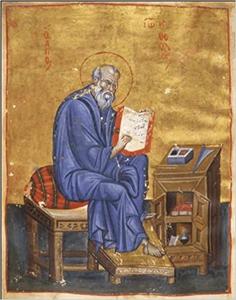
Free Download Nancy Patterson Sevcenko, "Greek Manuscripts at Princeton, Sixth to Nineteenth Century: A Descriptive Catalogue"
English | 2010 | ISBN: 0691143870 | PDF | pages: 499 | 198.2 mb
This is the first comprehensive scholarly publication of the rich holdings of Greek manuscripts and miniatures in Princeton, New Jersey, housed in the Firestone Library and the art museum of Princeton University, in the Scheide Library, and in Princeton Theological Seminary.
This important material represents both a broad range of time-from the early Byzantine period through the mid-nineteenth century-and a broad range of content, from Byzantine copies of classical texts to Gospel books, Lectionaries and patristic homilies, hymns and texts of the liturgy, medical books, and Holy Land pilgrimage guides.
Among the manuscripts are some spectacularly illustrated works, key monuments in the history of Byzantine illumination: an eleventh-century codex of John Klimax's Heavenly Ladder with vivid and unusual depictions of monastic life; evangelist portraits from a number of artistic periods and centers; extraordinary pages of pure ornament; and fine examples of post-Byzantine liturgical illustration of the sixteenth and seventeenth centuries. Among the most significant texts are a sixth-century palimpsest with Greek hymns in an extremely early form of musical notation, and a thirteenth-century copy of Aristotle's Organon, heavily annotated by the renowned Byzantine scholar and teacher John Chortasmenos (ca. 1370-1430). The collection also includes a fascinating eighteenth-century genealogical chronicle-a 45-foot-long roll with 562 illustrations of biblical events and personalities from the Creation to the Ascension of Christ, a work that was probably produced in the area of present-day Romania.
This collection offers insight into many aspects of the artistic and intellectual life-theological, monastic, scholarly, ecclesiastical-of the Byzantine and post-Byzantine world. It also contributes to the history of Greek philology and the development of the Greek book over more than a millennium, from the earliest centuries of manuscript production down to the period when, long after the appearance of printing, liturgical texts continued to be copied by hand and lavishly illuminated.
The catalogue provides codicological and art-historical analysis of all 64 manuscripts and leaves, along with detailed information on their content, provenance, and bindings; extensive bibliographies; and ample plates, almost all of them in color.
